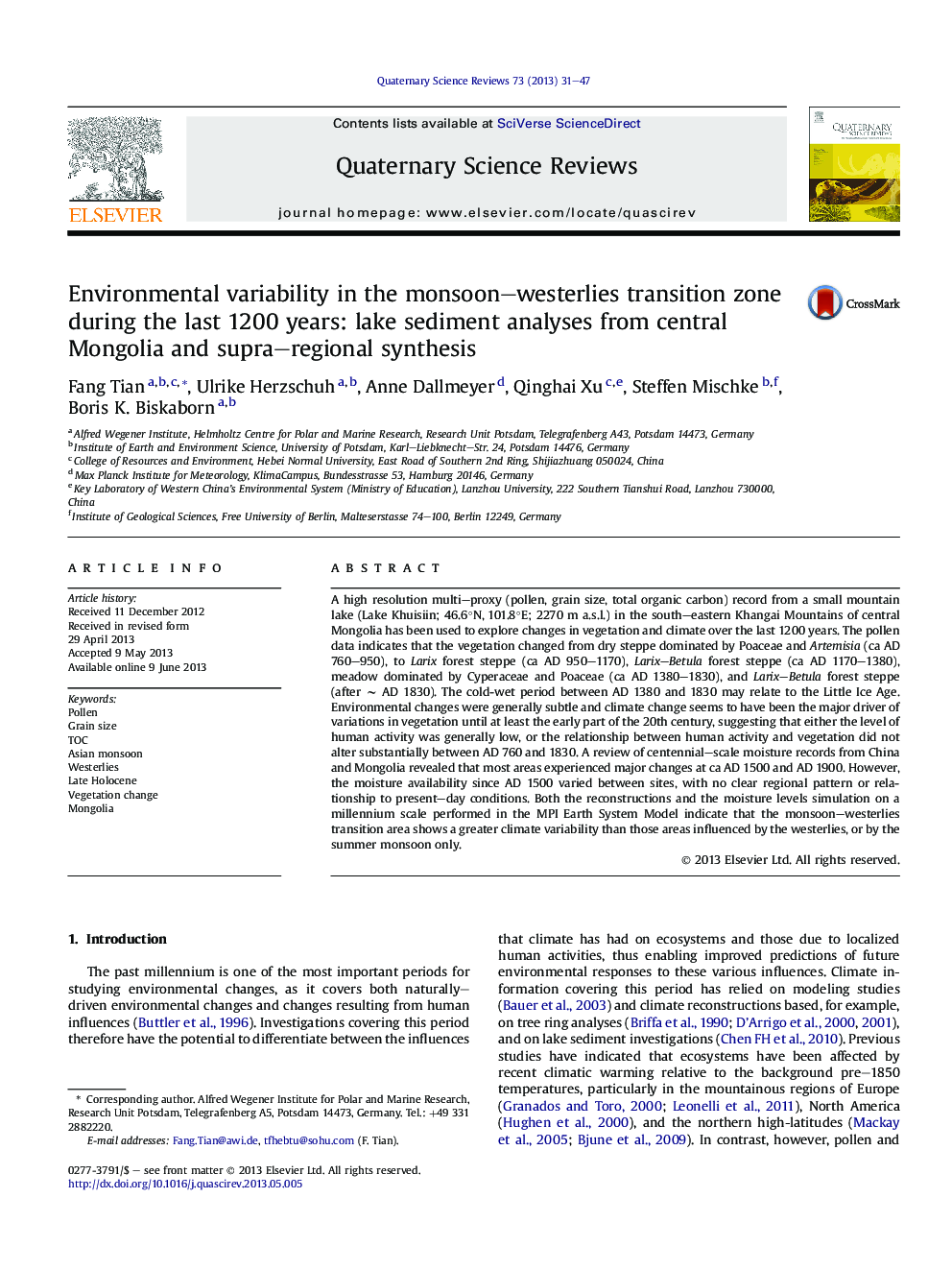| Article ID | Journal | Published Year | Pages | File Type |
|---|---|---|---|---|
| 4736780 | Quaternary Science Reviews | 2013 | 17 Pages |
•Multi-proxy record with high resolution of central Mongolia in the last 1200 years.•Relative wet climate during the Little Ice Age was found in central Mongolia.•The monsoon–westerlies transition area shows great climate variability.•The driest condition occurred since the last 50 years in China and Mongolia.
A high resolution multi–proxy (pollen, grain size, total organic carbon) record from a small mountain lake (Lake Khuisiin; 46.6°N, 101.8°E; 2270 m a.s.l.) in the south–eastern Khangai Mountains of central Mongolia has been used to explore changes in vegetation and climate over the last 1200 years. The pollen data indicates that the vegetation changed from dry steppe dominated by Poaceae and Artemisia (ca AD 760–950), to Larix forest steppe (ca AD 950–1170), Larix–Betula forest steppe (ca AD 1170–1380), meadow dominated by Cyperaceae and Poaceae (ca AD 1380–1830), and Larix–Betula forest steppe (after ∼ AD 1830). The cold-wet period between AD 1380 and 1830 may relate to the Little Ice Age. Environmental changes were generally subtle and climate change seems to have been the major driver of variations in vegetation until at least the early part of the 20th century, suggesting that either the level of human activity was generally low, or the relationship between human activity and vegetation did not alter substantially between AD 760 and 1830. A review of centennial–scale moisture records from China and Mongolia revealed that most areas experienced major changes at ca AD 1500 and AD 1900. However, the moisture availability since AD 1500 varied between sites, with no clear regional pattern or relationship to present–day conditions. Both the reconstructions and the moisture levels simulation on a millennium scale performed in the MPI Earth System Model indicate that the monsoon–westerlies transition area shows a greater climate variability than those areas influenced by the westerlies, or by the summer monsoon only.
